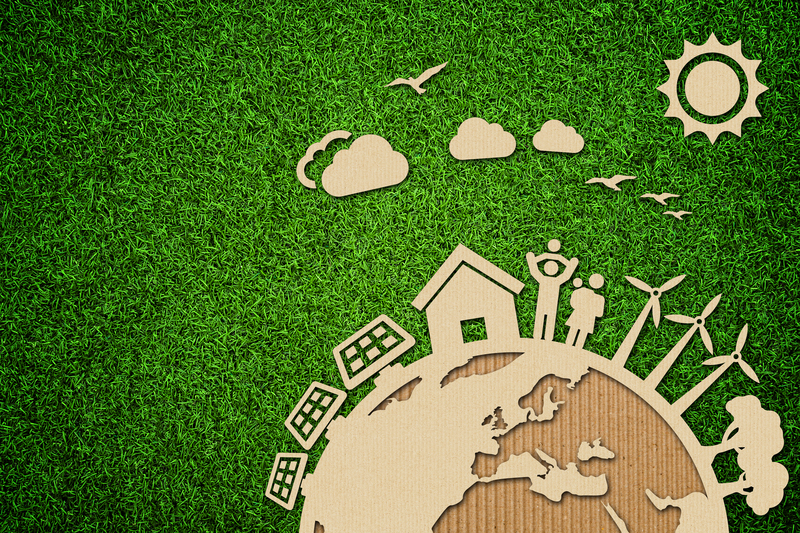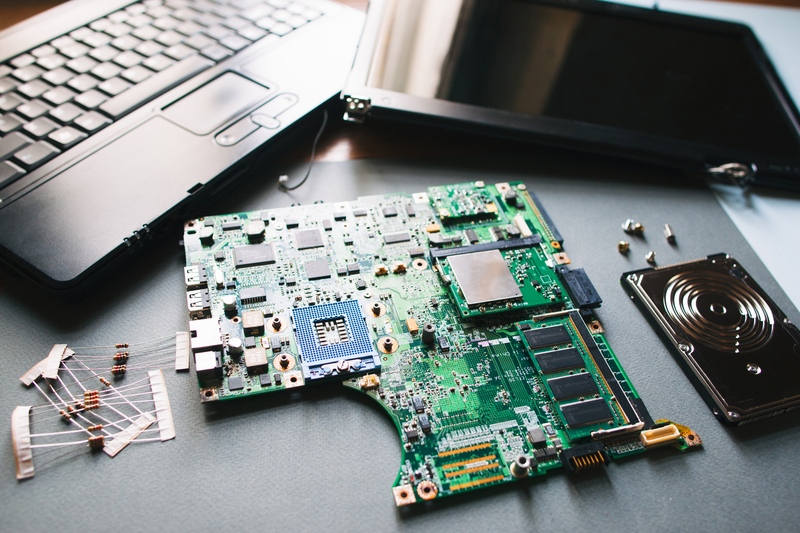Dynamic Changes in Packaging and Cardboard Disposal Approaches
In a rapidly advancing world, both consumers and corporations are witnessing remarkable shifts in how products are packaged and how packaging waste, especially cardboard, is managed. From innovative materials to sustainable disposal techniques, keeping up with the dynamic changes in packaging and cardboard disposal approaches is imperative for businesses and environmentally-conscious individuals.

Understanding Modern Packaging Trends
Evolution from Traditional to Modern Packaging
The realm of packaging has experienced a seismic shift over the past few decades. What was once a purely functional necessity is now influenced by factors such as sustainability, consumer experience, branding, and logistics. Cardboard packaging specifically has transformed in design, functionality, and lifecycle, largely driven by the urgent need to reduce environmental footprints.
- Simplicity to Smart Packaging: Packaging has evolved from basic containment to intelligent systems using QR codes, RFID tags, and indicators for freshness and tampering.
- From Monomaterials to Hybrid Solutions: Cardboard is now often combined with bioplastics, water-resistant coatings, and advanced adhesives to improve performance while maintaining recyclability.
- Customization and Branding: Modern printing technologies enable high-quality graphics, personalized designs, and interactive features directly on cardboard packaging.
Focusing on Sustainability and Circular Economy
A significant driver of innovative packaging trends is the growing awareness around environmental sustainability. The adoption of the circular economy model encourages creating packaging that remains in use for as long as possible and maximizes recycling and composting at its end-of-life stage.
- Use of Recycled Materials: Many companies opt for post-consumer recycled cardboard, slashing demand for virgin wood pulp and reducing energy usage.
- Design for Disassembly: Packages are now engineered for easy separation of materials, aiding efficient sorting and recycling.
- Biodegradable Additives: Incorporation of organic additives enables certain cardboard products to break down faster in composting environments.
Revolutionizing Cardboard Disposal Strategies
The Challenge of Cardboard Waste Management
The global rise in e-commerce and home deliveries led to an exponential increase in cardboard box consumption. Efficient cardboard disposal has become an urgent environmental concern. Landfills are overflowing, municipal recycling programs are strained, and improper disposal often leads to contamination.
Current Approaches to Cardboard Waste
- Collection and Recycling Programs: Most urban areas have curbside collection programs targeting cardboard and paper products. Sorting facilities separate contaminated or non-recyclable materials to ensure a clean recycling stream.
- Commercial Compactors: Retailers and distribution centers increasingly use compactors to compress cardboard waste, reducing transportation emissions and costs.
- Community Drop-off Points: For regions lacking door-to-door collection, local drop-off bins encourage proper cardboard recycling and higher recovery rates.
Emerging Technologies in Cardboard Disposal
*The onset of technology-driven solutions has further transformed the way we approach* cardboard recycling and disposal:
- Automated Sorting Robotics: Advanced material recovery facilities now employ AI-powered robots to detect and separate cardboard from mixed recyclables at high speeds.
- Blockchain for Traceability: Some pilot programs are using blockchain to track cardboard from source to recycling, improving transparency and accountability in waste management.
- Enzymatic Breakdown: Research continues into biological enzymes capable of accelerating cardboard decomposition, potentially diverting contaminated cardboard from landfill or incineration.
The Role of Consumers
Best Practices for Household Cardboard Disposal
Despite improvements in packaging innovation and municipal recycling systems, individual action remains vital. Households play a pivotal role in ensuring cardboard is properly sorted, cleaned, and prepared for recycling streams.
- Remove Contaminants: Separate food-soiled or greasy cardboard (e.g., pizza boxes) and follow local guidelines--some can be composted, but most should be discarded to prevent contamination.
- Flatten Boxes: Breaking down boxes ensures they take up less space, making transportation and processing more efficient.
- Keep Dry: Ensure that cardboard is dry and free from other waste items, as moisture and contaminants can render recyclable fibers unusable.
- Reuse When Possible: Before recycling, consider ways to repurpose sturdy cardboard for storage, DIY projects, or community donations.
Corporate Stewardship in Cardboard Waste Reduction
Designing for End-of-Life
Brands are increasingly embracing responsibility for the entire lifecycle of their packaging. The focus is on ensuring cardboard packaging is easy for consumers and businesses to dispose of responsibly. This is achieved through:
- Minimalism: Using only what's needed for protection and branding, eliminating excessive fillers or coatings.
- Clear Labeling: Including recycling instructions directly on packaging to guide users on proper disposal steps.
- Standardization: Designing packaging to comply with recycling facility requirements across multiple regions.
Closed-Loop Supply Chains
A growing number of companies are pursuing closed-loop cardboard systems, where boxes collected from customers (such as in B2B environments) are returned, reprocessed, and reused within the same supply chain. This drastically reduces waste and energy consumption compared to single-use models.
Investment in Waste-to-Energy Technologies
Some forms of cardboard unsuitable for recycling due to contamination are diverted to modern waste-to-energy facilities. Here, advanced combustion technology converts the material into usable energy with limited emissions, representing an alternative disposal route that reduces landfill reliance.
Innovations Shaping the Future of Packaging and Cardboard Disposal
Edible Packaging and Next-Gen Biopolymers
Companies are experimenting with edible films and innovative biopolymers that rival traditional cardboard in protecting goods but leave no waste behind. While not widely adopted yet, these technologies symbolize radical shifts in how we think about packaging and disposal.
Smart Return Schemes and Consumer Incentives
Some retailers now offer loyalty points or discounts for returning packaging. Innovative packaging designs make disassembly and return easy, facilitating higher recovery and recycling rates and fostering a culture of shared responsibility.
Urban Cardboard Composting Initiatives
Pilot projects in urban agriculture harness clean, shredded cardboard as a carbon-rich addition to community compost programs. This approach diverts cardboard from landfill, enhances soil quality, and empowers local food systems.
Environmental and Economic Impacts
Progress Toward Zero-Waste Goals
The convergence of dynamic changes in packaging and cardboard disposal approaches is propelling many cities and businesses toward zero-waste targets. Efficient cardboard management not only preserves landfill space but also recovers valuable fibers, reducing deforestation and raw material costs.
Cost Savings and Revenue Generation
- Reduced Disposal Fees: Efficient separation and recycling of cardboard lead to lower landfill tipping fees for municipalities and companies alike.
- Material Revenues: Clean, sorted cardboard is a marketable commodity, often sold to recycling mills and re-used in the packaging supply chain.
- Energy Generation: Waste-to-energy processes and biogas facilities harness the residual energy value of non-recyclable cardboard.

Challenges and Opportunities
Systemic Barriers
Despite innovations, several obstacles complicate the transition to fully sustainable packaging and disposal systems:
- Fragmented Recycling Systems: Inconsistent municipal standards confuse consumers and impede large-scale adoption of best practices.
- Supply Chain Complexity: Global supply networks make it challenging to standardize packaging formats or implement uniform disposal methods.
- Economic Constraints: The initial investment in new materials or recycling infrastructure may be prohibitive for small-scale manufacturers and municipalities.
- Contamination Issues: Food waste, grease, and mixed materials often render large quantities of cardboard unrecyclable.
Opportunities for Improvement
Nonetheless, ongoing research and collaboration among packaging designers, waste managers, and policy makers promise significant advances in both packaging innovation and cardboard waste reduction:
- Standardization and Education: Clear, global guidelines and public outreach campaigns will empower consumers and reduce contamination rates.
- Investments in Automation: Scalable robotic and AI-powered sorting technologies will make recycling faster and more efficient.
- Extended Producer Responsibility (EPR): Regulations that mandate producers to finance or operate recycling and disposal programs are gaining traction worldwide.
- New Market Creation: Developing secondary markets for recycled cardboard products will close the loop and incentivize collection.
Conclusion: Embracing Dynamic Change in Packaging and Cardboard Waste Management
The landscape of packaging and cardboard disposal is undergoing a profound transformation, spurred by technological innovation, consumer demand for sustainability, and global policy initiatives. Dynamic changes in packaging and cardboard disposal approaches are creating pathways toward a more sustainable, circular future.
By embracing minimalism, investing in recycling and composting technology, and fostering collaborative initiatives between producers and consumers, we can minimize waste, protect natural resources, and build more resilient communities. Whether you are a business owner, a policy maker, or a conscientious consumer, understanding and participating in these evolving packaging and cardboard disposal methods is essential for shaping an eco-friendly tomorrow.
Now is the time to rethink, redesign, and revolutionize our approach to packaging and cardboard waste.